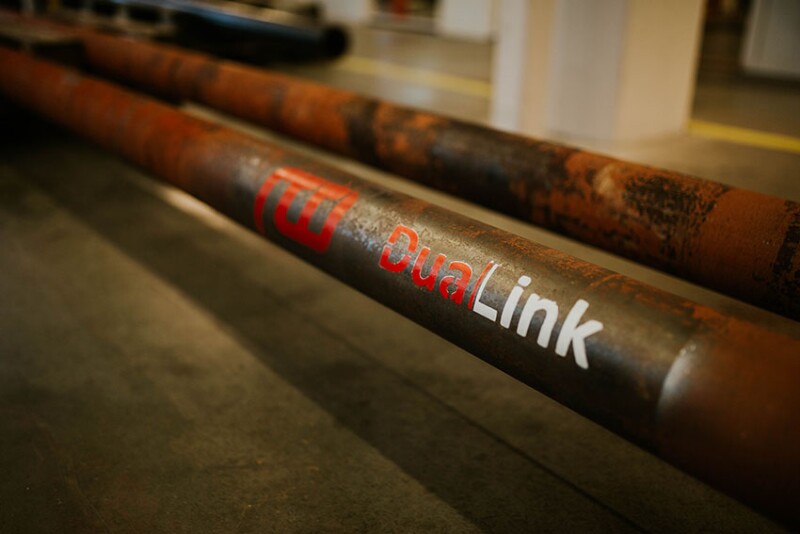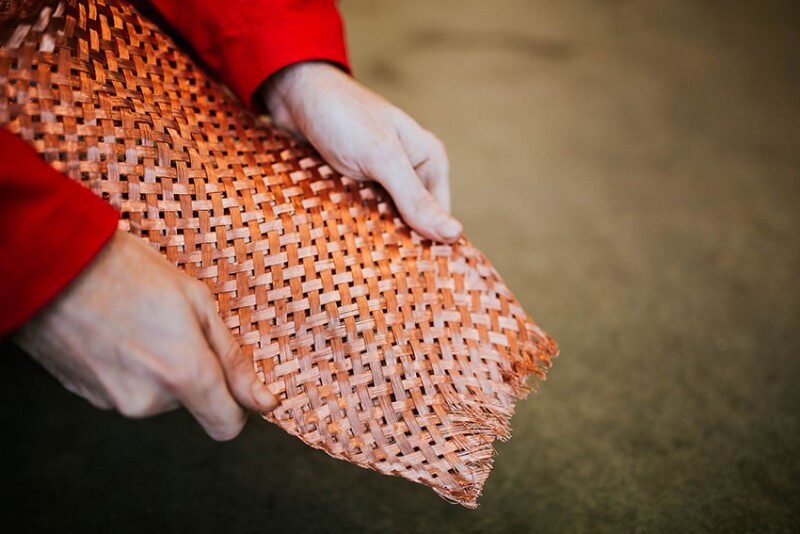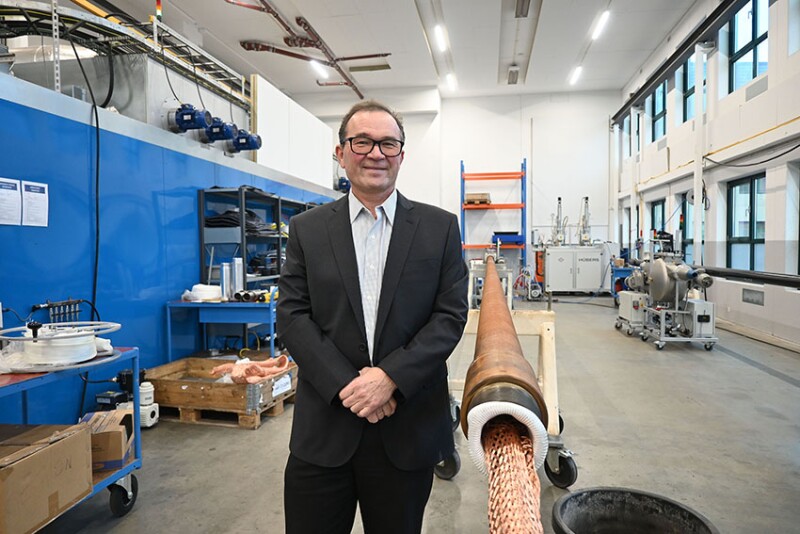Reelwell’s DualLink wired drillpipe is heading offshore for the first time, set to make its debut later this year in a campaign with Vår Energi on the Norwegian Continental Shelf.
The Stavanger-based technology developer sees the project as more than a milestone—it’s a chance to shift the narrative around wired pipe, a technology first brought to the market by NOV more than 2 decades ago.
Challenged by high costs and integration hurdles, earlier generations of wired pipe never quite found widespread adoption. But Reelwell says it’s ready to change that.
The DualLink system delivers real-time telemetry and, in a notable evolution, brings high‑wattage downhole power into play for the first time.
In this Q&A with JPT, Svein Strømberg, Reelwell’s newly appointed CEO and 31-year veteran of Baker Hughes, unpacks the company’s strategy as it prepares to put its most advanced technology to work offshore Norway.
Editor’s note: This interview has been edited for length and clarity.
JPT: What does Reelwell bring to the table that the industry hasn’t seen before?
SS: DualLink delivers high-speed data from the bottomhole assembly (BHA) to surface and high power from surface to the downhole BHA, enabling real-time transmission of both data and electrical power. It transmits at rates up to 56 kilobits per second (kbps), which is a significant leap compared to conventional mud pulse systems that typically operate between 1 and 30 bps. That level of bandwidth opens the door to much more detailed and frequent tool updates.
But the real differentiator is electrical power. Our wired pipe can deliver up to 500 W downhole at present, enabling tools and functionality that simply are not possible with telemetry alone. Whether it’s active flow control, tool actuation, or high-power sensors, having a reliable power source changes what’s technically feasible today.
Right now, surface certification standards place some limits on how much power can be supplied, but the system itself is built to scale. It is fully redundant and engineered to support greater capacity as requirements evolve. And for many current applications, 500 W is already more than enough to drive meaningful gains in capability.
In our conversations with leading exploration and production companies, both in Norway and the US, the data speed was compelling, but what really stood out was the power.
That’s what they saw as the key to enabling the next generation of downhole tools, and it has played a major role in recent contract awards. DualLink isn’t just about faster data, it’s about unlocking a smarter, more capable downhole environment.
More broadly, we’re entering a market that has long been defined by a single legacy provider. That kind of landscape can limit innovation. With new players emerging, including Reelwell, we believe the increased competition will help accelerate the adoption of wired-pipe technologies and expand what’s possible in drilling operations.
JPT: Considering the industry’s historical reluctance to invest in wired drillpipe, how is Reelwell overcoming legacy obstacles and advancing the case for wider use?
SS: There’s been hesitation in the past as wired pipe was often seen as expensive, complex, and difficult to plan for, especially when decisions had to be made a year in advance. And for some, the value wasn’t clearly understood.
But I’m confident our upcoming work offshore in Norway will demonstrate that the landscape is changing. The benefits are becoming too significant to ignore.
Wired drillpipe alongside automation has already been shown to deliver up to 15% improvements in drilling, circulating, and tripping efficiency, largely thanks to the real-time data and telemetry it enables. That’s not just theory, there are numerous SPE papers and operator testimonials that support these gains.
When you consider that offshore rig spread costs can approach $1 million per day, even small efficiency gains quickly translate into substantial cost savings.
Yes, the technology comes at a higher upfront cost than conventional drillpipe today. But as with any innovation, scale will bring that cost down. Right now, we handle pipe conversion in-house at our workshop. As we expand and grow our volumes, we fully expect the unit cost to reduce, making this technology even more accessible to the broader market.

JPT: What more can you tell us about the upcoming project and where you hope the company will go from here?
SS: I joined Reelwell in January, just a week before we received the letter of intent from Vår Energi confirming the contract award for operations on the semisubmersible COSL Pioneer. The rig is set for a multiwell campaign offshore Norway, and following contract finalization, we began pipe conversion and system preparations. Our plan is to deploy the equipment and commence operations in the fourth quarter.
We’re excited about this first offshore deployment, but we’re also building momentum elsewhere. In Houston, we’ve worked closely with Nabors Industries, one of our key investors—who have been extremely supportive during the testing phase, running DualLink on their rigs.
We now have a complete string and equipment package staged and ready for mobilization at Nabors’ yard in Houston. We’re actively engaged in discussions with two major operators pursuing onshore applications where both power and data delivery can make a real impact. While the onshore wired-pipe market is still emerging, we’re seeing strong interest from customers tackling technically demanding wells where conventional solutions fall short.
As for the project with Vår Energi, it will focus on high-speed data transmission initially. That’s what today’s service providers’ tools are currently configured to support. However, the capability to supply direct power from surface to the BHA is already in place, and we’re collaborating with partners and service providers to adapt downhole tools to fully leverage this capability. Stay tuned as we expect to share further updates on this front in the coming months.
Currently, many BHA tools rely on lithium batteries, which have limited lifespans and add complexity in terms of logistics and replacement. By removing the need for batteries and downhole turbines, tools can become shorter, lighter, and more reliable.
This also opens the door to placing sensors closer to the bit, something drillers have been asking for to improve wellbore placement and trajectory control.

JPT: Tell us about your process. What does pipe conversion involve?
SS: We start with standard double-shouldered drillpipe, which is either supplied directly or provided by the operator or service company. Inside the pipe, we apply an electrical insulator to the internal diameter, then insert a copper braid to serve as the conductive medium. We then reinforce it with a layer of carbon fiber to protect the pipe internals from erosion, mechanical damage, and the harsh downhole environment.
Power and data are transferred from pipe to pipe via galvanic interconnectors, and this continues seamlessly for up to 10000 m—or just over 32,000 ft. Unlike legacy wired-pipe systems, we don’t require repeaters or batteries. Instead, we’ve developed distributed string modules (DSMs) and measurement-while-drilling (MWD) modules that are made using only solid-state electronics and sensors. That means there are no onboard batteries or moving parts for increased reliability and easy handling. Our DSMs can be placed anywhere along the drillstring to monitor parameters like hole cleaning, flow, vibration, string rotation, and more.
The design is inherently robust and redundant. Even if a section of the wired mesh inside the pipe is damaged, communication continues—thanks to over 800 conductor channels embedded in the system. We’ve built this technology with reliability, redundancy, and resilience at its core.
I’ve been in this industry a long time, and I know how quickly confidence disappears if things fail on the rig. That’s why we’ve focused so much on system durability. We believe our technology is ready to handle the harshest North Sea conditions—whether it’s torque, temperature, or depth. This system is built to take a real beating and keep going.
JPT: Some see advancements in drilling automation as a potential catalyst for wired‑pipe adoption. Are you seeing that play out in your own experience?
SS: Yes, absolutely. This is a fast-moving white space. We’re having ongoing discussions with partners and customers, and there’s a clear momentum building. Think about it: deeper-reading measurements, longer runs in hole, and critically, closing the loop between surface rig automation and downhole tool automation.
Currently, MWD systems can only transmit limited amounts of data, which often means processing must happen downhole, and only small packets of dataset are sent to surface. That constrains real-time decision-making. But with wired pipe, the bandwidth unlocks access to so much more data, enabling faster, more informed decisions.
We’re also seeing more operations managed remotely. A decade ago, offshore rigs had a full crew onboard, the directional driller, logging-while-drilling loggers, and others. Now, many of those roles have shifted to onshore real‑time operations centers. This model has proven to be more efficient, but it’s still constrained by the lack of real-time visibility into critical downhole conditions, things like hole-cleaning efficiency, equivalent circulating density behavior, or steering response, and so on.
JPT: You touched on the advantages of offering downhole power, but how would it change the drilling operation?
SS: Yes, I mentioned that that one early and obvious application is to develop downhole tools that are less reliant on lithium batteries or turbines downhole. Removing these power sources will allow drilling assemblies to remain downhole longer, remove limited-life chemical or mechanical devices, and shorten the BHA, which means the sensors are closer to the drill bit.
Currently, we are looking at applications with partners that would benefit from combining bidirectional high-speed telemetry and electrical power to allow operators to send commands from surface, get instant confirmation the command has been received, or enable an electrical actuator downhole.
With this, they could perform a precise action in real time while having full visibility on the progress and, finally, confirmation of the process being completed. No more blind actuation from mechanical forces applied at surface or rudimentary darts and balls that must be pumped down from surface.
Completions is another area where powered, wired drillpipe can really make a difference. Right now, we’re using workarounds, things like flow, weight on bit, or pressure cycles to activate valves, set packers, or land hangers. It works, but it’s slow, and it takes time to confirm whether a valve has actually shifted or a tool has properly set.
You often need to wait for pressure responses or perform wireline intervention runs just to confirm a tool functioned as expected.
With powered pipe, you can send commands directly, like flipping a switch, and get immediate feedback. You know in real time that a valve has opened or closed, or that a packer is properly set. That kind of certainty means faster operations, fewer trips, and more rig time saved.
And this goes beyond drilling. If you zoom out and think about everything that happens across the full well life cycle, completions, interventions, plug and abandonment, workovers—there are plenty of steps that rely on mechanical or hydraulic activation from surface.
Having power and data downhole opens up the potential to streamline all of that. It’s not just a drilling tool; it’s a technology platform that enables greater efficiency, control, and insight across the entire well construction and life cycle operation.


